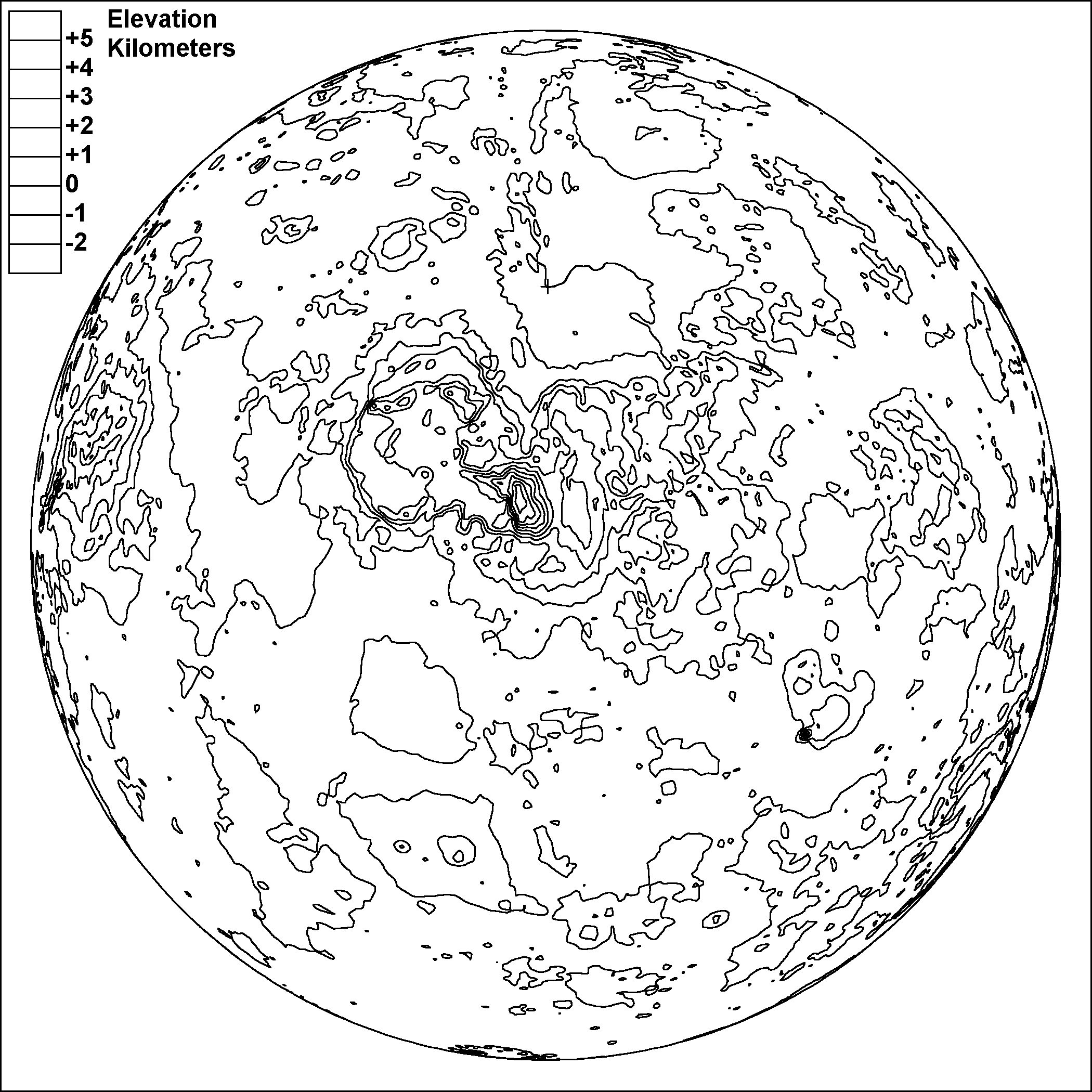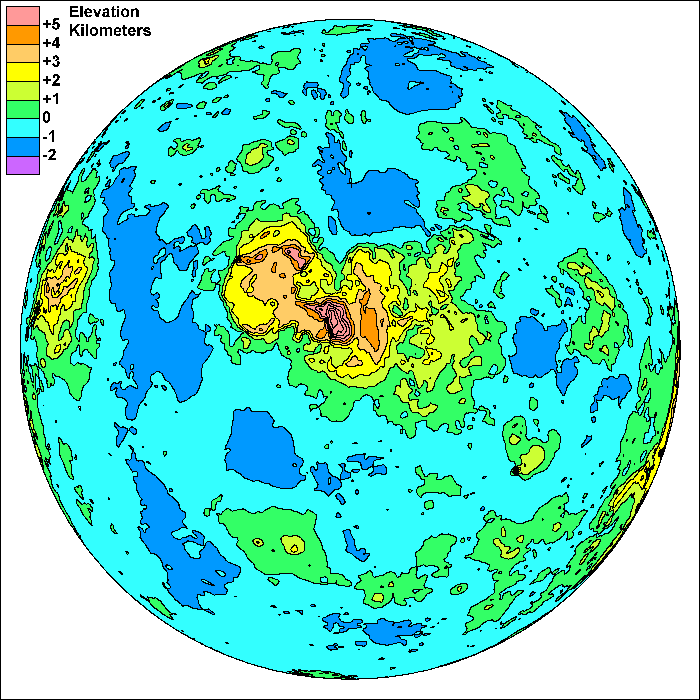Venus: Ishtar Terra
Steven Dutch, Professor Emeritus, Natural and Applied Sciences, University of Wisconsin - Green Bay
Astronomers figured out long ago that Venus must be covered with clouds because it is so brilliant in the sky. The clouds made it impossible to see Venus' surface from Earth at all. Many people thought that the clouds must mean Venus was very warm and wet, possibly with life.
Earth-based radio observations in the 1950's, and spacecraft observations beginning with Mariner II in 1962, showed that Venus is far too hot for water or life. Its atmosphere is 90 times as dense as Earth's, and the pressure on the surface is about equal to half a mile deep in the oceans on Earth. The atmosphere is so dense that even if there were no clouds at all, we could not see the surface because the atmosphere would scatter light too much, like trying to see through frosted glass. The atmosphere is carbon dioxide, which traps heat from the sun, raising the temperature to 900 degrees F. The clouds are fine droplets of sulfuric acid, possibly erupted from volcanoes.
Even though Venus is almost a twin to the Earth in size, it is different in almost every other way. Nothing at all was known of the surface of Venus until Russian and American spacecraft mapped the surface with radar. How do we measure elevations on a planet with no seas? We use the average diameter of the planet as zero elevation. Venus is much smoother than Earth. The average elevation on earth is about 3 kilometers below sea level, but most of the earth is several kilometers higher (the continents) or lower (the oceans) than that. On Venus, most of the surface is within a kilometer of average.
One of the surprises (and disappointments) of mapping Venus is that Venus seems to lack plate tectonics. There is nothing on the topographic maps of Venus that looks like mid-ocean ridges or ocean trenches. Venus has many volcanoes and two large plateaus, one of which, Ishtar Terra, is shown here. It lies in mid-northern latitudes and is about the size of Australia. Venus' north pole is indicated with a cross.
Places on planets are named using Latin geographic terms ("terra" is Latin for "land" and is used for large plateaus). Since Venus was a goddess, features on Venus have female names. Ishtar was the Babylonian goddess corresponding to Venus.
The highest mountains on Venus are in the middle of Ishtar Terra, rising to 11 kilometers elevation - about as far as Mount Everest is above Earth's average elevation. They are called Maxwell Montes (Maxwell Mountains). This is one of a handful of features on Venus named before the female names rule was adopted. The mountains were named for James Maxwell, the physicist who discovered the laws of electromagnetism that make radio and radar possible. Since the mountains were discovered by Earth-based radar observation, before the naming conventin was adopted, they were named in Maxwell's honor.

Possible Coloring

Return to Geology Coloring Book Index
Return to Professor Dutch's Home Page
Created 21 August 2009, Last Update 15 January 2020